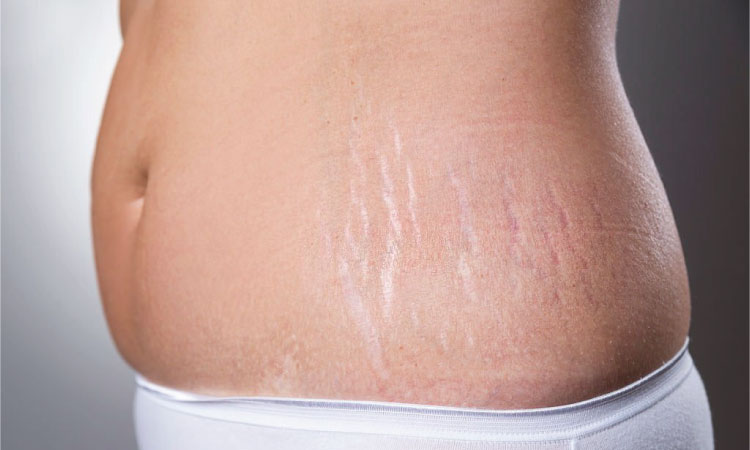As soon as you learned you were pregnant, you knew your life would never be the same! Furthermore, you knew your body would change, such as gaining weight during pregnancy or having larger breasts. The good news is that many of these changes will return to the prenatal stage after birth. Some changes, however, may never be reversed. Before you complain “my body is ruined after having a baby” read on to understand why does your body change forever after pregnancy. In this blog, we discuss 12 of the most common permanent body changes after pregnancy.
12 Permanent Body Changes After Pregnancy That Women Experience
Pregnancy is associated with lasting physical changes in many women. “Does your body permanently change after pregnancy?” Well, the answer is yes. You may have a larger waistline, wider hips, and a softer belly after delivery1. The abdomen may also change after giving birth. However, the list does not end here.
Find out the top 12 permanent body changes after pregnancy most women encounter.
1. Skin changes due to delivery
During pregnancy, the skin of the expecting women undergoes a variety of changes. Pregnant women can sometimes experience darkening of their face, areolas, necks, stomachs, freckles, and moles.
Estrogen hormones are responsible for this. Pregnancy also leads to ‘Linea Nigra’ (pregnancy line), which is a dark vertical line that runs from the belly to the pubic hair region. However, it might not completely disappear after delivery, even though it fades eventually.
Some women can develop dark patches on their faces, known as chloasma, during pregnancy. After giving birth, most of these will fade within several months, but some women may have them for a few years.
Related Reading: 11 Easy Tips Glowing Skin During Pregnancy
2. Stretch mark
It is common for pregnant women to get stretch marks, as 8 out of 10 experience them2. As your pregnancy progresses, they often appear on the stomach, or sometimes on the upper thighs and breasts.
A stretch mark occurs when one’s skin cannot keep up with the growth of the body. Stretch marks occur when there is a rupture in the elastic fibers beneath the surface of the skin.
Stretch marks fade after delivery. As they fade, the stretch marks turn silver or white. However, the stretch marks do not disappear completely. There is no reliable evidence showing that oil or cream can remove stretch marks once they appear but one can always try these home remedies for stretch marks during pregnancy.
3. Sagging breasts are caused after delivery
One of the most depressing long-term side effects of pregnancy is sagging breasts. In medical circles, this is called ptosis. The breasts will not perk up once they have drooped. The reason for this is that they lack muscle. The breasts are attached to the muscles of your chest via ligaments.
Droopy breasts are caused by stretching of the ligaments and elastin that keep fat tissue in place. Pregnancy stretches the ligaments, which don’t tighten again after delivery.
Thus, once the breasts droop, they may never be the same shape as before you became pregnant. With each pregnancy, the likelihood of breast ptosis increases. However, breastfeeding does not play a role in droopy breasts, as many women believe3.
4. Diabetes

According to a study pregnancy-related gestational diabetes mellitus (GDM) or high blood sugar is a major concern in India, affecting approximately five million women every year. When women with a history of gestational diabetes (GDM) undergo a glucose tolerance test at 6–12 weeks after delivery, 2–16% are diagnosed with type 2 diabetes and 36% are found to have an intolerance to carbohydrates.
Women who had prior gestational diabetes have a 36–70% risk of developing type 2 Diabetic Mellitus later in life, depending on risk factors and length of follow-up4. The risk of cardiovascular and metabolic diseases later in life is higher for women with a history of adverse pregnancy outcomes.
Related Reading: 12 Precautions To Take After Normal Delivery
5. Vaginal changes happen after delivery
Following a vaginal birth, the vagina and vaginal opening usually shrink back to their original size. If you have a big baby, a baby with a large head, or have more than one vaginal delivery, the chances of the vagina going back to its original size are less5.
If that is the case, the vagina can feel looser, softer, and more ‘open,’ and noticeably different from the pre-birth shape. Tampons may not stay inside the vagina the way they used to before pregnancy. Vaginal changes can be caused by a variety of factors, including delivery method, size of baby, genetics, and obesity.
Women may also experience pigment changes in the vulva, especially in the labia and perineum (the area between the vaginal opening and anus). The extent of the change depends on delivery and scar tissue developed
6. Wider hips
During pregnancy, your bones can physically widen to accommodate the growing weight of your baby and the changes in your body size6. The changes in the bone structure after pregnancy can cause widening of the hips in women.
It is common for your ribs and hips to enlarge during pregnancy to facilitate the baby’s exit from the birth canal. Wider ribs and hips may persist after pregnancy. The weight gained during pregnancy can also contribute to the hips remaining wider after delivery.
7. Changes in pelvic floor due to delivery
The pelvic floor muscles support the pelvic organs, including the uterus, bladder, and bowel. Additional strain is placed on these muscles during pregnancy due to the weight of the baby. During a vaginal delivery, the pelvic floor muscles can sometimes be damaged or stretched.
The pelvic muscles that help control the bladder can weaken after vaginal delivery. The nerves and supportive tissue of the bladder can also be damaged. As a result, the pelvic floor can drop (prolapse). Cesarean sections are also a risk factor.
Women with prolapsed pelvic floor muscles might leak urine when they sneeze, cough, or laugh. The most at risk are women who deliver vaginally or who have very large babies and thus the Kegel exercises are recommended after delivery.
8. Foot size increases

According to a new study of women’s feet during and after pregnancy, arch height and arch rigidity decrease dramatically from early pregnancy to five months after childbirth, resulting in permanent increases in foot length. Pregnancy can increase your shoe size for two reasons: weight gain and hormonal changes. Extra weight can flatten out your foot arch.
Also, you may know about the hormone relaxin. To prepare for childbirth, this hormone relaxes the ligaments and bones in your pelvis. It also relaxes all of your joints and ligaments, including those in your feet. This can cause your feet to flatten and spread out, causing you to need a larger shoe size. These changes to your feet are permanent.
9. Abdominal separation
Diastasis recti, or abdominal separation, is a very common and permanent change in pregnancy. This is a partial or complete separation of the muscles at the midline of the stomach called the rectus abdominis, or “six-pack”. It occurs in about two-thirds of all pregnant women7. However, the extent varies. It is something that does not resolve spontaneously but can persist for years.
Related Reading: 15 Easy Tips To Lose Weight After Delivery
10. Brain changes happen after delivery
Women’s brains also change physically after giving birth, according to some neuroscience research. Researchers found that mothers’ brains have less grey matter than their non-mother counterparts.
Grey matter is largely situated in the outer layers of the brain and is heavily involved in high-level functions such as seeing, hearing, remembering, and feeling, as well as making decisions. The shrinkage was still apparent two years after childbirth, suggesting that childbirth may result in permanent changes to the brain.
11. You may start farting too much
According to a source, a pelvic nerve called the pudendal nerve can be damaged during childbirth, resulting in flatal incontinence – the inability to control farts. It is possible to lose some stool when one experiences flatal incontinence. Within a year after giving birth, around 15 percent of women experience at least one episode of this.
12. You may experience heavier periods after delivery

Heavy periods are common after delivery for some women. There can be a range of causes, from endometriosis to undiagnosed gynaecological or endocrine problems8.
Conclusion
These permanent body changes after pregnancy do not happen to everyone and it is unlikely that you would experience them all. However, now you know that you are not alone if your shoes suddenly fit differently or you leak a little when you cough after you have a baby.

